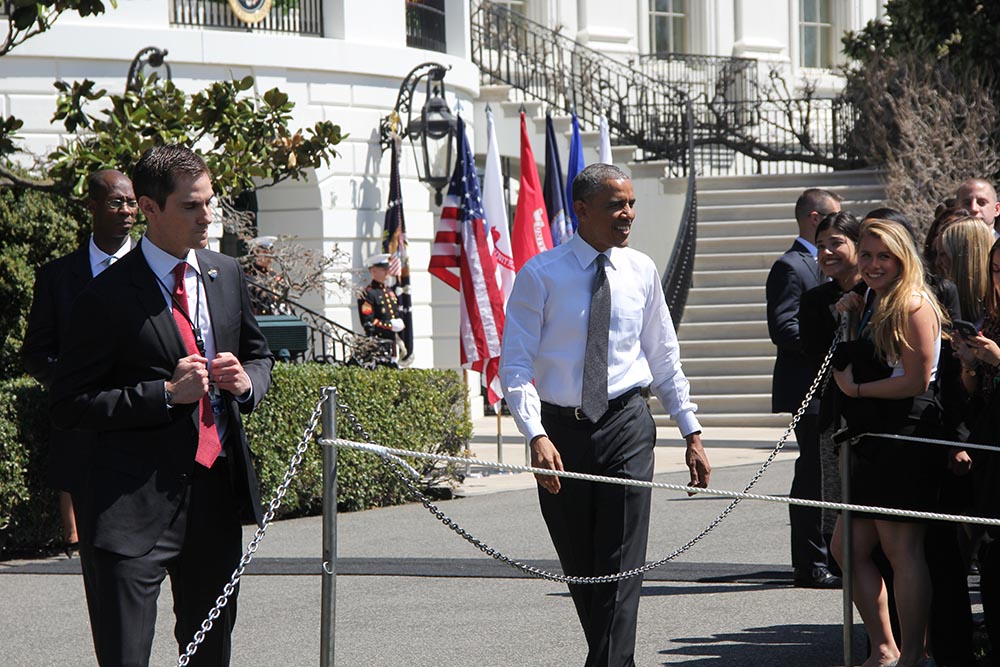 War may be more automated than ever, but human fingers still pull the triggers.
War may be more automated than ever, but human fingers still pull the triggers.
Although President Barack Obama has adopted drones as the workhorse weapons system of his anti-terrorism strategy, full automation is unlikely in the near future.
“Drones don’t change the human dimension of war,” said Christopher Swift of Georgetown University, a leading expert on the anti-terrorism campaign in Yemen. The true philosophical quandary, Swift explained, comes with granting computers the power to shoot.
Replacing humans with computers in that capacity “seems like an incredibly bad idea,” said Josh Meyer, former chief terrorism reporter for The Los Angeles Times and director of education and outreach for Medill’s National Security Journalism Initiative.
While it’s unlikely that automaton UAVs would present a sci-fi threat akin to the Terminator series’ Skynet, the human element is still essential for effective use of drones.
Ground based teams commonly aid UAVs in finding their targets. There are also strong indications that the military is using manned aircraft in the sort of covert missions usually reserved for drones. Witness February’s fatal accident in Djibouti, in which an Air Force Special Operations U-28 with civilian markings crashed killing all 4 occupants.
But the level of reliance on unmanned aerial vehicles (UAVs) is not to be underestimated. According to Peter Bergen of the New America Foundation, the Obama administration conducts a drone strike every 4 days. Under President George W. Bush, the average time between drone attacks was 40 days.
There are many reasons for the increased dependence on drones. One major advantage of drones over conventional aircraft is the UAV’s ability to remain in a holding pattern for a long period of time. This ability leads to “better precision [when conducting strikes]”, said Meyer.
Another advantage is political. Drone strikes have been ordered overwhelmingly in Pakistan and Yemen, countries where a conventional American military presence would likely create havoc. While Pakistan and Yemen have tacitly acquiesced to UAV operations over their territories, the strategy is not without flaws.
The strikes have successfully weakened Al-Qaida by killing off many within its leadership, especially those with battle experience. “It used to be that Al-Qaida had a deep bench,” said Meyer, “some killed aren’t easily replaceable.”
But the strikes aren’t 100 percent accurate. The collateral damage caused by drone attacks has at times alienated potential key allies on the ground. Swift claims drone strikes have multiplied the number of Al-Qaida militants in Yemen threefold.
The pressure for young Yemeni males is economic, Al-Qaida pays $200 a month in a $60 a month economy, and reactive: Signature strikes, attacks aimed at men behaving in a suspicious manner, have often hit undeserving targets. As Swift pointed out, “Not everybody with an Ak-47 and a turban in Yemen is al-Qaida.”
Most UAV missions are not signature strikes but targeted killings. Because of collateral damage, missiles mounted on drones have been modified over time to be more precise.






 Wounded Marines are competing at Camp Pendleton this week for a spot in the nationwide 2013 Wounded Warriors games. Athletes train and compete in several games throughout the year to make their way to the top competition. “It’s just kind of getting me back to being normal,” says Sgt. Kaleb Weakley, whose femur was shattered by a gunshot wound in Afghanistan a year ago.
Wounded Marines are competing at Camp Pendleton this week for a spot in the nationwide 2013 Wounded Warriors games. Athletes train and compete in several games throughout the year to make their way to the top competition. “It’s just kind of getting me back to being normal,” says Sgt. Kaleb Weakley, whose femur was shattered by a gunshot wound in Afghanistan a year ago. 
 The
The  War may be more automated than ever, but human fingers still pull the triggers.
War may be more automated than ever, but human fingers still pull the triggers.



